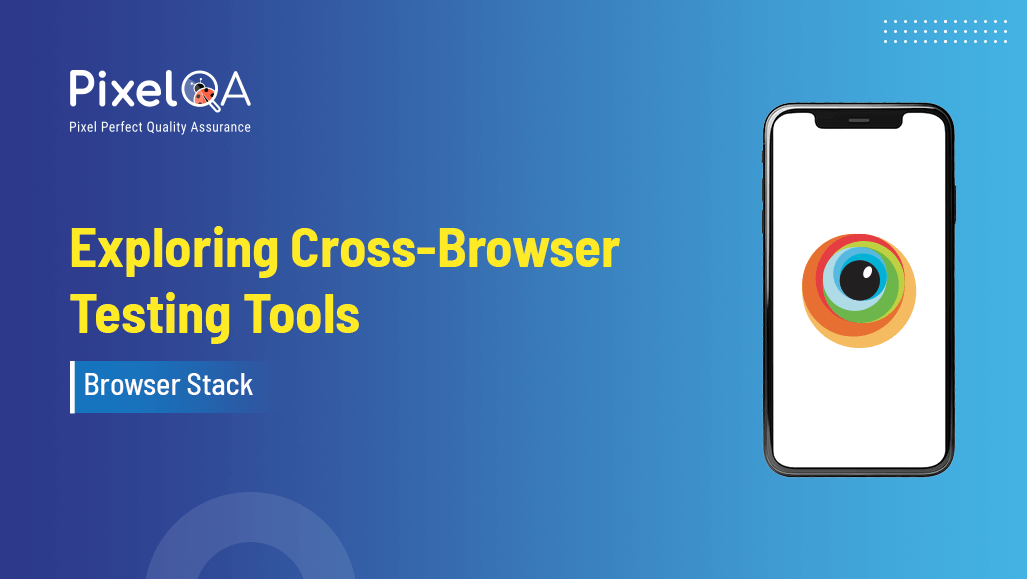
Table of Contents
- Introduction
- Why Cross Browser Testing is crucial?
- What is a Browser Stack?
- Key Features of Browser Stack
- Advantages of Browser Stack
- How to Get Started with Browser Stack?
- Best Practices for Cross-Browser Testing on Browser Stack
- Conclusion
Introduction
In today’s cyber world, people uses all kind of devices, browsers and OSs to interact with websites. Making sure a website works as expected on all the platforms can be challenging but is a necessity to provide a error and lag free experience for all users. This is where a Browser Stack tool plays a crucial role as a tool which makes cross-browser testing simplified for testers and deve
Why Cross Browser Testing is crucial?
Cross browser testing is to make sure a website looks and works the same on different browsers and devices. Each browser understands website code in little different ways, this can affect the site’s functionality, design and performance. Using a Cross Browser Testing Service helps ensure consistency and smooth performance across all platforms. If not tested well, users might face different experiences on specific browsers.
2.1. Cross-browser testing usually covers:
- Compatibility testing is used to ensure it works on different browser versions.
- Responsive testing is used to make sure that the website layout does adjusts well across different devices.
- Performance testing is used to check load time and stability.
What is a Browser Stack?
Browser Stack is a robust cloud-based platform specifically designed for cross-browser testing, making it possible for developers and QA teams to thoroughly test websites across numerous environments. Launched in 2011, Browser Stack revolutionized testing by enabling access to thousands of real devices and browsers in the cloud, eliminating the need for physical hardware setups.
Developers and testers can test on various device-browser combinations ranging from the latest smartphones to older desktop browsers allowing them to catch and address potential issues users might face on any specific setup.
This ease of access helps testers pinpoint bugs related to device performance, browser compatibility, and screen resolution, ultimately ensuring a smoother, more consistent experience across platforms. Browser Stack also supports remote debugging tools and automated testing, so developers can streamline their workflows and focus on delivering quality without setting up complex testing labs or acquiring multiple devices.
Key Features of Browser Stack
Browser Stack offers several useful features as below:
- Live Testing on Real Devices:
Browser Stack helps you test in real-time on real devices and browsers, providing the same experience your users would have. This is specifically helpful in finding device specific issues. - Automation Testing with Tools Selenium, Appium and Cypress:
For organizations with large number of test cases, Browser Stack provides support of automated testing for web apps using tools such as Selenium and Cypress and for mobile apps with Appium. This saves a lot of time by running tests simultaneously across multiple devices and browsers. - Responsive Testing:
Browser Stack lets you test how the website will look on different screen sizes, orientations and resolutions. It will make sure that the same look and feel is there across all devices. - CI/CD Tool Integrations:
BrowserStack works with popular continuous integration/continuous deployment (CI/CD) tools such as Jenkins, GitHub and GitLab. This means, automated tests can be run every time you make changes to your code, helps in finding bugs at early stage and keep quality high. - Debug Tools:
BrowserStack has a multiple tools that helps troubleshooting the issues, including console logs, network logs, screenshots and recorded videos of tests. This may helps developers to quickly identify and fix bugs. - Geolocation Testing:
For apps that use different locations around the world, Browser Stack helps you to test from different locations around the world. This also let you check location bound content, currency, language and others for users located in different countries.
Advantages of Browser Stack
5.1 BrowserStack provides many advantages:
- Scalability: Team may easily scale up their testing efforts with their access to thousands of devices and browsers from the browser stack.
- Cost-Efficiency: There’s no need to maintain physical devices as BrowserStack offers cloud-based devices as infrastructure.
- Real-World Testing: Browser Stack uses real devices so testing results will match the user experience.
- Time Savings: Automated testing makes the testing process efficient and finds the bugs at an early stage which saves a lot of time.
How to Get Started with Browser Stack?
- Sign Up and Select a Plan: Browser Stack offers different plans to suit user requirements, catering to the need of an individual developer or part of a bigger team.
- Set Up Your Testing Environment: Once logged in, user can choose live manual testing or automated testing using tools like Selenium.
- Start Testing: For manual testing, select the device and browser you required, then launch the website you want to test. For the automated testing, integrate Browser Stack with your testing framework.
- Review and Debug: Use screenshots, video recordings and logs to debug issues and share the results with the team.
Best Practices for Cross-Browser Testing on Browser Stack
- Prioritize Browsers: Users need to focus on the popular browsers among the audience. Browser stack also provides analytics to help users with this as well.
- Run an Automated Tests First: User can start with their automated testing first to include a wide range of configurations, then move to manual testing for specific areas.
- Leverage CI/CD Integration: Combine Browser Stack with the CI/CD pipeline for continuous testing and early-stage feedback and analysis.
- Use of Debugging Features: Team uses console logs, network logs and screenshots to troubleshoot and improve the test coverage.
Conclusion
Browser Stack makes cross-browser testing easy by helping developers ensure the same experience for users across different devices and browsers. As a leading Cross Browser Testing Service Tool, its features like live testing, automation support, and CI/CD integration make it a must-have tool for development and QA teams. Whether you’re just starting out or working as an individual or for a large reliable Cross Browser Testing Company browser stack is an asset for providing high-quality web applications.
With so many tools on hand, Browser Stack is not just a testing tool, it is a complete suite solution to make sure the website works smoothly and lag-free for all users, no matter what device or browser they are using.
About Author
 Hardik Mochi started his testing journey in October 2015 as a Junior Software Tester, and now he is an Associate Team Lead at PixelQA a Software Testing Company. With a focus on testing mobile apps, Windows applications, and web portals in the RX and CG domains, Hardik developed strong software testing skills. Progressing to Senior Tester over 5.5 years, he transitioned to XDuce India PVT LTD, specializing in ETL testing and acquiring SQL expertise, complemented by earning the AZ-900 certification. He is eager to delve into automation while maintaining interests in electronic hardware, current affairs, and geopolitics, aiming to advance as an automation professional in the future.
Hardik Mochi started his testing journey in October 2015 as a Junior Software Tester, and now he is an Associate Team Lead at PixelQA a Software Testing Company. With a focus on testing mobile apps, Windows applications, and web portals in the RX and CG domains, Hardik developed strong software testing skills. Progressing to Senior Tester over 5.5 years, he transitioned to XDuce India PVT LTD, specializing in ETL testing and acquiring SQL expertise, complemented by earning the AZ-900 certification. He is eager to delve into automation while maintaining interests in electronic hardware, current affairs, and geopolitics, aiming to advance as an automation professional in the future.




